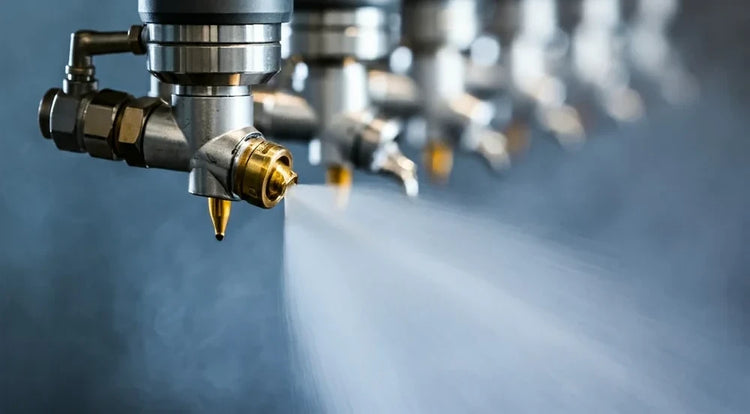Liquid Velocity Calculator
Enter flow rate and internal diameter to compute velocity.
Area (A): —
Velocity (v): —
Uses v = Q / A with unit conversion. Results shown in m² for area and m/s & ft/s for velocity.
How the Liquid Velocity Calculator Works
The calculator computes velocity from volumetric flow and internal diameter using the continuity equation: v = Q / A, where the cross-sectional area A = π·D²/4.
Inputs
- Flow Rate (Q): Enter your flow in GPM, L/min, or m³/s.
- Diameter (D): Use the internal nozzle or pipe diameter in inches or mm.
Outputs
- Area (A): Cross-sectional area in m².
- Velocity (v): Liquid velocity in m/s and ft/s.
Example
Given: Q = 20 GPM, D = 0.25 in
- Convert units to SI (the calculator does this automatically).
- Compute area: A = π·D²/4.
- Compute velocity: v = Q / A → ~39.8 m/s (~130.7 ft/s).
When Velocity Matters
- Spray impact & reach: Higher velocity increases jet momentum and throw.
- Erosion & wear: Excess velocity can damage piping and shorten nozzle life.
- Process control: Coating, rinsing, and cleaning steps often target a velocity band.
Tips for Accurate Results
- Use the internal diameter (ID), not nominal pipe size.
- If you know actual flow from a meter, this method inherently includes real-world losses.
- For pressure-based estimates (e.g., v ≈ Cd√(2ΔP/ρ)), add our Advanced mode or contact us.
Need sizing help? NozzlePro engineers can size orifices, estimate impact/coverage, and recommend materials.

